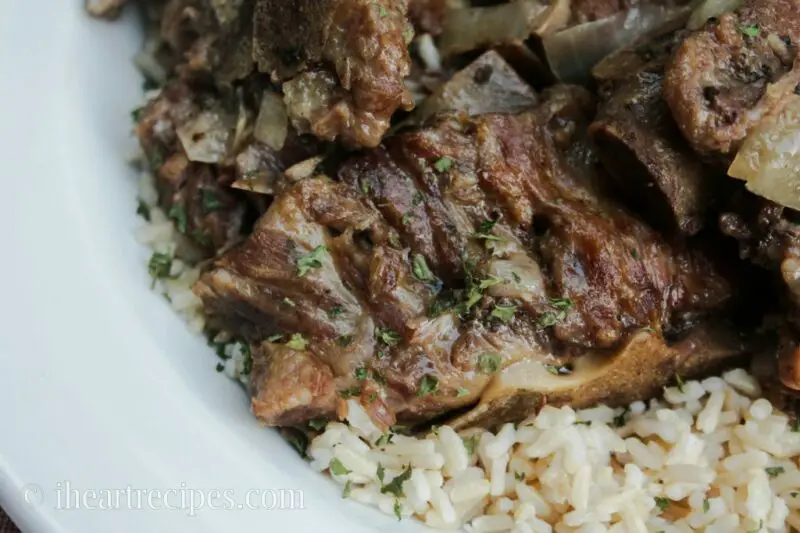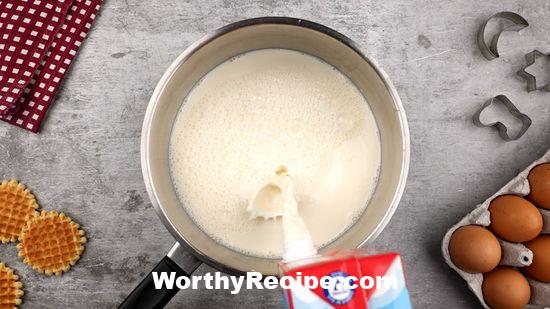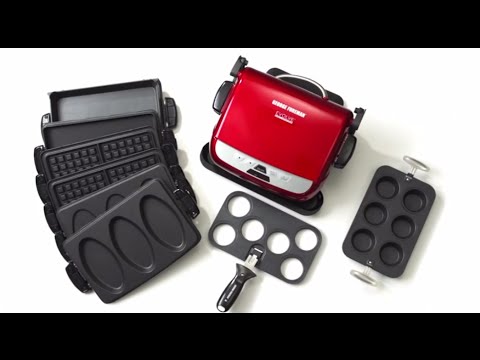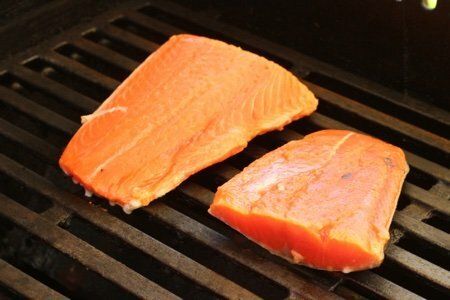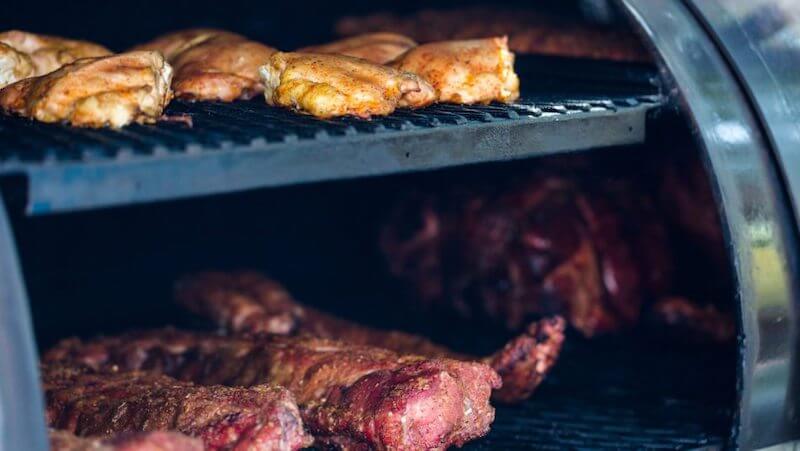How to Cook Pork Bones: A Comprehensive Guide
Pork bones are an underrated ingredient that can add depth, flavor, and nutrition to your cooking. From making a rich broth to braising ribs, there are many ways to cook pork bones that you may not have considered before. In this comprehensive guide, we will walk you through all the steps of preparing and cooking pork bones and offer expert tips to help you get the most out of this versatile ingredient.
Introduction
Pork bones are what remain after the meat has been removed from the animal, whether for consumption or processing. They come in various shapes and sizes, from thick rib bones to smaller shoulder bones. Pork bones should not be overlooked as they are packed with protein, calcium, iron, glycine, and many other essential nutrients. Cooking them also yields a flavorful broth that can serve as a base for different soups and stews.
The Benefits of Cooking Pork Bones
Cooking with pork bones has the following benefits:
- Adds flavor and depth to soups and stews.
- Balances out fatty meats like pork belly or bacon.
- Is healthier than using bouillon cubes or pre-made broths.
- Improves bone health due to calcium content.
- Contains glycine which supports better sleep quality.
Preparing the Pork Bones
Before cooking your pork bones, you need to ensure that they are high-quality and have been cleaned properly.
Ensuring That You Have High-Quality Pork Bones
Choose fresh pork bones that have been refrigerated correctly and weren’t previously frozen solid. Getting freshly cut bones ensures that you avoid any rancidity or off notes that can often develop from freezer burn or prolonged storage.
Cleaning the Pork Bones
Rinse the pork bones under cold running water for a few minutes to remove any debris, blood, or bone fragments that could affect your final product. Don’t worry about drying them, as this won’t affect the recipe you’ll be using.
How to Trim the Excess Fat from Pork Bones
Before cooking your pork bones, it’s important to trim any excess fat that could make your broth greasy. Use a sharp knife and remove any visible pieces of fat but don’t worry about getting everything as this will impart some flavor down the line.
The Different Methods of Cooking Pork Bones
There are several ways to cook pork bones, depending on the dish you want to prepare.
Slow-Cooking Pork Bones on a Stovetop or in a Slow-Cooker
Slow cooking your pork bones can yield a very nutritious and flavorful broth that can be used for many different recipes. The stovetop method is excellent if you don’t have access to a slow-cooker.
Benefits of This Method:
- Lower temperature provides an even cooking environment.
- Extracts more gelatin and nutrients due to longer cooking time.
- Can be done on a stovetop with little attention needed.
Step-by-Step Instructions for Slow Cooking:
- Rinse and clean the pork bones.
- Add them to your pot, along with minced garlic, onion, and other seasonings.
- Add enough water (or stock) to cover the bones completely.
- Cover and bring to a boil; then, reduce heat to retain a consistent low simmer.
- Let it cook for at least 6-8 hours, adding more water as needed, so the bones are still covered.
- Once done, strain the broth and store it in the fridge or freezer for later use
Pressure Cooking Pork Bones
Pressure cooking is an excellent method if you are short on time and want to make your broth quickly.
Benefits of This Method:
- Cuts down on cooking time significantly
- Helps tenderize tougher cuts like pork ribs
- Limits evaporation of flavorful liquid through high pressure, leading to more concentrated flavors.
Preparing the Pressure Cooker:
- Follow the pressure cooker manual instructions regarding amount of water to put in for each cup of ingredients.
- Add the pork bones seasoned with garlic, onion, salt, black pepper, and any other seasonings.
- Cook according to instructions (between 60 and 90 minutes).
- Allow natural release for at least 15 minutes, then quick release.
Preparing Smoked Pork Bones
Smoking is an excellent way to add additional flavor to your pork bones making them unique from other recipes. You will need the equipment and skill to smoke meat either on a pellet smoker such as a Traeger or charcoal grill with a smokebox.
Benefits of This Method:
- Adds a distinctive smoky flavor to pork bones and brings an authentic BBQ taste even indoors or in cold weather conditions.
- Infuses seasoning into the bones to make them more flavorful from the inside out.
- Can produce a variety of grilled pork meat dishes.
How to Smoke and Ensure Proper Flavor Infusion:
- Follow your equipment manual instructions on smoking meat such as prepping pellets, lighting up charcoal in a smokebox, or adding wood chunks for grill smoking.
- Season raw pork bones generously with salt, paprika, black pepper, garlic powder, and any additional desired spices; add olive oil generously and mix well.
- Place your seasoned bones in a smoker/grill at around 225 degrees Fahrenheit and allow it to smoke/bake for about 45 minutes:
- If smoking with a Traeger type grill, set the temperature at 225 degrees and let it run until the pork bones get to an internal temperature of 165 F.
- If using a charcoal grill/smokebox, set up your lump charcoal/firewood, ensure that you keep consistent heat by using vents and airflow systems to maintain a steady temperature.
- Add wood chips every 15-20 minutes throughout the smoking process for aroma infusion.
- Remove from heat and store appropriately or use right away based on recipe instructions.
Cooking Dishes Using Pork Bones
Now that you have cooked your pork bones using one of the methods above let’s move on to some of the delectable dishes you can prepare using this bone broth.
Basic Pork Bone Broth Recipe
This is a fundamental recipe that can be adapted easily to include different ingredients like vegetables, meat (cooked or uncooked), or grains. You can also alter the seasoning based on your preferences, adding more or less salt, pepper, or garlic.
Extended Benefits of Making Broth Soup with the Bone Too:
- Can act as a base for all soup recipes.
- Provides hydration and replenishment of nutrients for overall body health.
- Helps reduce inflammation in some cases.
Tips on Seasoning with Basic Ingredients such as Salt, Pepper, Garlic, Onions:
- Add your cooked pork bones to a large pot of water and bring it to a boil. Start with adding enough water to cover the bones.
- The bones should be simmered and not boiled so that you need to lower the heat to achieve a gentle and consistent simmer.
- Add peeled garlic cloves, sliced onions, chopped carrots and celery sticks and season the broth with sea salt, black pepper, bay leaves or any preferred spices.
- You can let it simmer for any period between two to six hours. This extended cooking time will give you a deep flavor profile packed full of beneficial protein like collagen and minerals. Alternatively, keep this soup recipe simple and turn off the stove after about two hours if desired.
- Strain the broth through a fine-mesh sieve or cheesecloth before use.
Braised Pork Ribs Recipe
This is an easy-to-make recipe that involves seasoning the pork ribs with your preferred spices before braising them in flavorful pork bone broth.
Tips on Adding Your Favorite Spices for Kick Flavors:
- Purchase well-marbled pork rib slabs from your local butcher. Depending on your preference ask your Butcher to trim the excess fat to give you meat with just enough for flavor.
- Season each rib slab individually with your preferred spice mix (e.g., paprika, cumin, onion powder, etc.). Apply rub-in moderation while massaging into the meat surface equally on all sides.
- Place the ribs in a large baking dish and pour over enough pork bone broth to cover them evenly.
- Braise the ribs in a preheated oven at 325F for about two hours or until tender.
- Broil the final dish for another extra five minutes to achieve a crispy golden texture on top.
- Serve hot, garnished with fresh herbs, chopped tomatoes and onions as desired.
Grilled Pork Bone Recipe
This recipe requires grilling/smoking pork bones where you marinate them with your preferred marinade adding in additional spices if you desire and fire up your grill for some regular barbecued ribs.
Essential Tips for Seasoning and Preparing Your Grilled Meats:
- Select individual bones from previously cooked batches that will hold up well on the grill. Brush generously with oil-based marinade before adding spices such as garlic powder, onion flakes, paprika, salt, black pepper, etc based on preference (a dry rub method).
- Preheat your grill or smoker to high heat temperatures of about 375-400F degrees.
- Cook pork bones over direct high heat turning them occasionally until they become slightly charred or cooked through and tender (to an internal temperature of between 140 F – 165F depending on your desired texture.)
- If using charcoal/grill burning styles, use acidic marinades such as vinegar or citrus along with mild heat seasonings to prevent breakage from high heat temperatures.
- Allow pork bones to rest for 5-10 minutes after removing them from the heat source to allow juices to settle before serving.
Expert Tips and Tricks
Here are some expert tips to help you get the most out of cooking with pork bones:
Using Different Types of Pork Bones for Different Recipes
Different cuts of pork bones will work best for different dishes. For example, rib bones are great for smoking while leg bones or shanks are perfect for braising stews.
Ways to Customize Recipes for Your Specific Dietary Needs
If you have dietary needs or restrictions, you can still cook with pork bones by adjusting the seasoning to your specific tastes and choosing the right ingredients.
How to Store Cooked Pork Bones Safely
Store cooked pork bones in an airtight container in the fridge and use within two days. You can also freeze them for up to six months.
Conclusion
Cooking with pork bones can seem intimidating at first, but this versatile ingredient opens up many possibilities for unique and delicious dishes. From slow-cooking on the stovetop or in a slow-cooker to pressure-cooking or smoking on a grill, there is no limit to what you can do. With this comprehensive guide and expert tips and tricks, you’re now well-equipped to start incorporating pork bones into your cooking repertoire and enjoying all the benefits they offer!
5 FAQs About Cooking Pork Bones
1. Can I cook pork bones without meat?
Yes, you can cook pork bones without meat and use them as a base for soups or broths. However, keep in mind that pork bones will add more flavor and nutrients to your dishes if they have a little bit of meat left on them.
2. What is the best way to clean pork bones before cooking?
To clean pork bones before cooking, rinse them well under cold running water to remove any blood or debris. Then, soak them in cold water overnight to get rid of any impurities and odors.
3. How long does it take to cook pork bones?
The cooking time for pork bones depends on the recipe you are following. If you are making a broth or stock, you will need to simmer the bones for at least 4-6 hours to extract all the flavor and nutrients. If you are cooking them with other ingredients, such as vegetables or beans, it may take longer.
4. Can I roast pork bones before cooking them?
Roasting pork bones before cooking them can add more depth of flavor and richness to your dishes. To roast the bones, preheat your oven to 400°F (200°C), place the bones on a baking sheet lined with parchment paper, and roast for about 30-40 minutes or until they are browned and caramelized.
5. How do I store leftover cooked pork bones?
If you have leftover cooked pork bones, let them cool down completely before storing them in an airtight container in the refrigerator for up to 3-4 days. You can also freeze them for up to 6 months.
